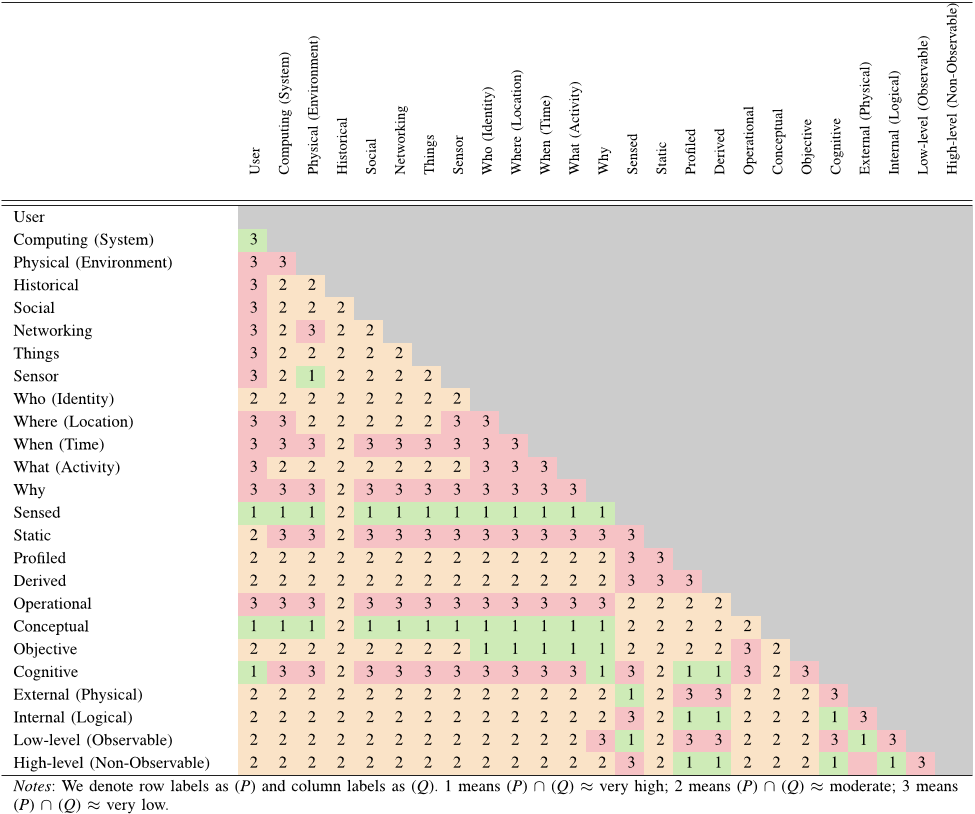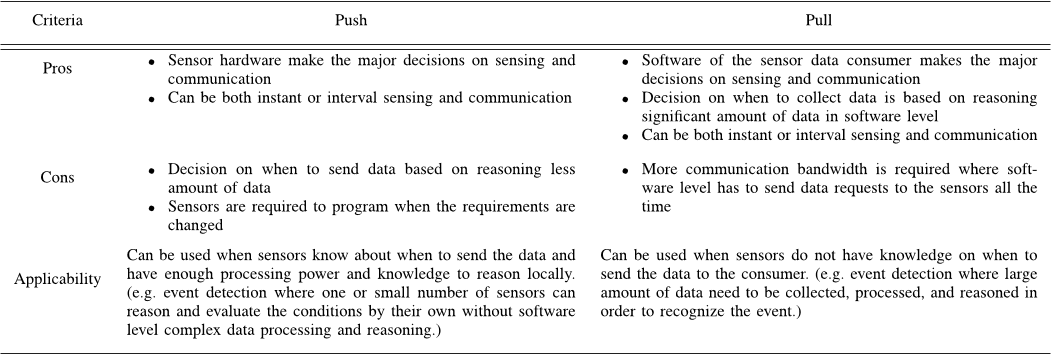




read more





![TABLE I IOT MIDDLEWARE COMPARISON [14]](/figures/table-i-iot-middleware-comparison-14-3f6oo2zf.png)





Recent developments such as Transducer Electronic Data Sheet ( TEDS ) [ 221 ], Open Geospatial Consortium ( OGC ) Sensor Web Enablement related standards such as Sensor Markup Languages ( SensorML ) [ 133 ], sensor ontologies [ 143 ], and immature but promising efforts such as Sensor Device Definitions [ 224 ] show future directions to carry out the research work further, in order to tackle this challenge. Recent developments in semantic technologies [ 135 ], [ 143 ], [ 225 ] and linked data [ 226 ], [ 227 ] show future directions to carry out further research work. There are many types of context that can be used to enrich sensor data. Incorporating and integrating multiple techniques has shown promising success in the field.
Hydra identifies context reasoning rule engine, context storage, context querying, and event/action management as the key components of a context-aware framework.
Molla and Ahamed [8] identified ten challenges that need to be considered when developing sensor network middleware solutions: abstraction support, data fusion, resource constraints, dynamic topology, application knowledge, programming paradigm, adaptability, scalability, security, and QoS support.
Components such as reasoning models, data fusion operators, knowledge bases, and context discovery components can be dynamically composed according to the needs.
In addition, the android mobile operating system consists of a number of software sensors such as gravity, linear accelerometer, rotation vector, and orientation sensors.
Some of the most common and basic information that needs to be captured in relation to context are context type, context value, time stamp, source, and confidence.
The possible sources that can be used to collect evidence regarding the location are GPS sensors, motion sensor, calendar, email, social networking services, chat clients, ambient sound (sound level, pattern), users nearby, camera sensors, etc.
Some of the major sensor network middleware approaches are IrisNet, JWebDust, Hourglass, HiFi, Cougar, Impala, SINA, Mate, TinyDB, Smart Object, Agilla, TinyCubus, TinyLime, EnviroTrack, Mires, Hood, and Smart Messages.
object based modelling is suitable to be used as an internal, nonshared, code based, run-time context modelling, manipulation, and storage mechanism.
The techniques used to acquire context can be varied based on responsibility, frequency, context source, sensor type, and acquisition process.
Subscription (also called publish / subscribe): Context con-sumer can be allowed to subscribe with a context management system by describing the requirements.
Their discussion is based on the six most popular context modelling techniques: key-value, markup schemes, graphical, object based, logic based, and ontology based modelling.
A context attribute has an identifier, a type and a value, and optionally a collection of properties describing specific characteristics [89].
The authors use the following abbreviations to denote the context reasoning techniques employed by the project: supervised learning (S), un-supervised learning (U), rules (R), fuzzy logic (F), ontology-based (O), and probabilistic reasoning (P).
As an IoT solution will be used in many different domains, the ability to add ontologies (i.e. knowledge) when necessary is critical for wider adaptation.
in order to build a fully context-aware solution, the authors have to embed context-aware capabilities in both software and hardware layers.
The authors use the following abbreviations to denote the context modelling techniques employed by the project: key-value modelling (K), markup Schemes (M), graphical modelling (G), object oriented modelling (Ob), logic-based modelling (L), and ontology-based modelling (On).6)
In terms of expressive richness, graphical modelling is better than markup and key-value modelling as it allows relationships to be captured into the context model.
the best method to tackle the problem of context awareness it to combine multiple models in such a way that, as a whole, they reduce weaknesses by complementing each other.